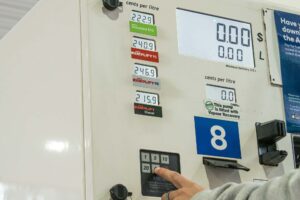The plans of NSW company Genex Power to convert an abandoned Queensland gold mine into one of Australia’s largest solar and pumped hydroelectric storage plants have received a boost from ARENA, with a contribution of $4 million towards an ongoing feasibility study into the project.

The feasibility study will explore the technical and commercial viability of constructing the proposed power plant at the disused Kidston gold mine in northern Queensland, which is estimated to cost around $282 million. A 150MW solar plant may be added to the site too, with a new proposal to build a large solar PV array to complement the pumped storage.
As we reported here in November, the use of large-scale pumped hydro to store excess electricity generation has been touted by some as a cheaper and easier alternative to batteries to complement an increasingly distributed grid, but there are few new examples of it in Australia.
Acting ARENA CEO Ian Kay said the work by Genex could reinvigorate the pumped hydro storage industry in Australia and enable more renewable energy to be used on national grids.
“This feasibility study aims to pave the way for the first new pumped hydro storage development in Australia in more than 40 years,” he said.
“Energy storage is becoming increasingly important as more renewables are connected to the Australia’s electricity grids. Pumped hydro storage can provide a cost-effective alternative to large-scale battery storage and concentrating solar thermal storage.
The Kidston mine, 270km north-west of Townsville, has the key characteristics required for a pumped storage power project, including two deep, adjacent pits.
“The original mine site has two pits 400 metres apart, with an ideal size and depth,” said Genex managing director Michael Addison. It also benefits from mine and electricity infrastructure already in place as well as existing permits.
Genex – which launched an initial public offer in June ahead of listing on the Australian Securities Exchange (ASX) in July – engaged Hydro Tasmania offshoot, Entura, to conduct the feasibility study.
“The proposed plant would take advantage of the Kidston mine’s unique characteristics and the existing infrastructure at the site, minimising its environmental footprint,” said Kay in a statement on Friday.
“The novel approach will use the former mining pits as upper and lower water storage reservoirs.
“If the case for pumped hydro storage at disused mine sites is proved, it could give abandoned mines across Australia a new lease on life. Genex has already identified nine sites with similar characteristics to Kidston that could be potential future candidates.”
The proposed plant will operate on an off-peak pumping, peak generation cycle, storing excess electricity during periods of low demand and high generation.
Genex is also exploring the use of variable speed turbines, which can effectively manage grid stability in areas with grid constraints or high levels of renewable energy generation.







